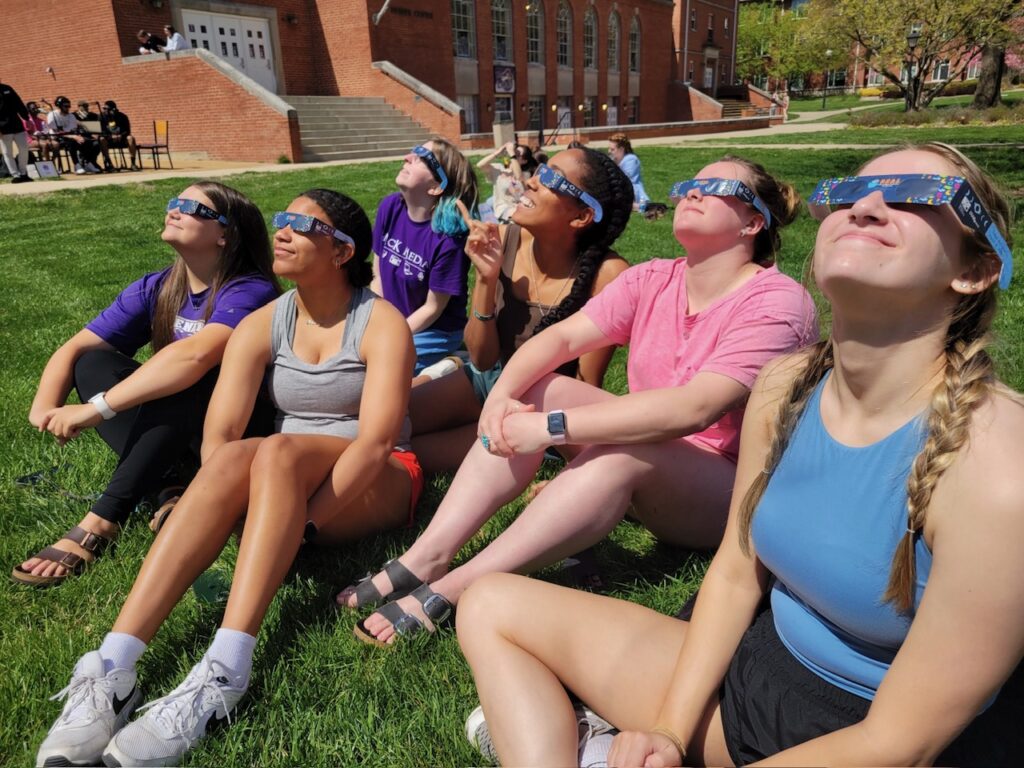
By Madison Rohn, Lead Editor
Photography by Phoebe McCutcheon, Madison Rohn, and Mia Wylie
On the afternoon of Monday, April 8th, students gazed through glasses at the sky to watch the Great American Eclipse pass over McKendree.
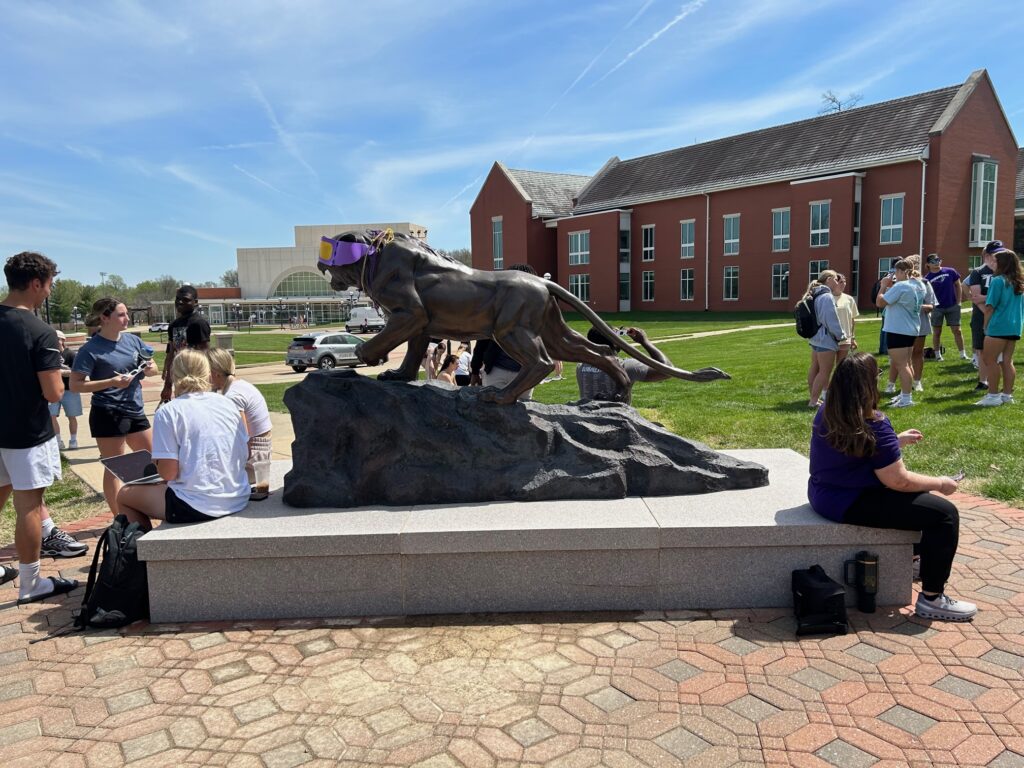
This year’s eclipse was a total solar eclipse, in which the moon travels between the sun and the Earth, covering our view of the sun. McKendree’s campus was in an area of 99.7% totality, meaning that almost all of the sun was covered during the peak of the eclipse, which occurred around 2:00 P.M. (Padilla & Zaiets, 2024). The next solar eclipse in the U.S. isn’t until 2044, so this phenomenon was worth celebrating (Padilla & Zaiets, 2024).
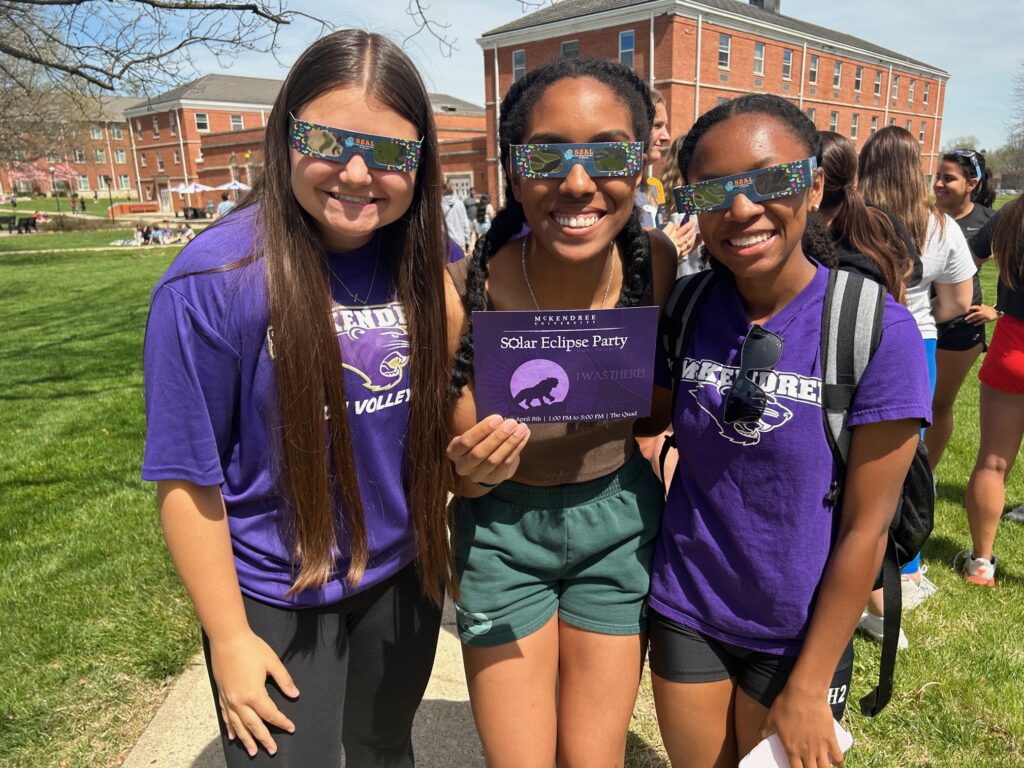
All classes were canceled on Monday from 1:00 to 3:00, and students were invited to an eclipse viewing party on the quad. Certified glasses were given out, so everyone could safely watch the eclipse, and themed snacks like Moon Pies and “eclipse cookies” were available.
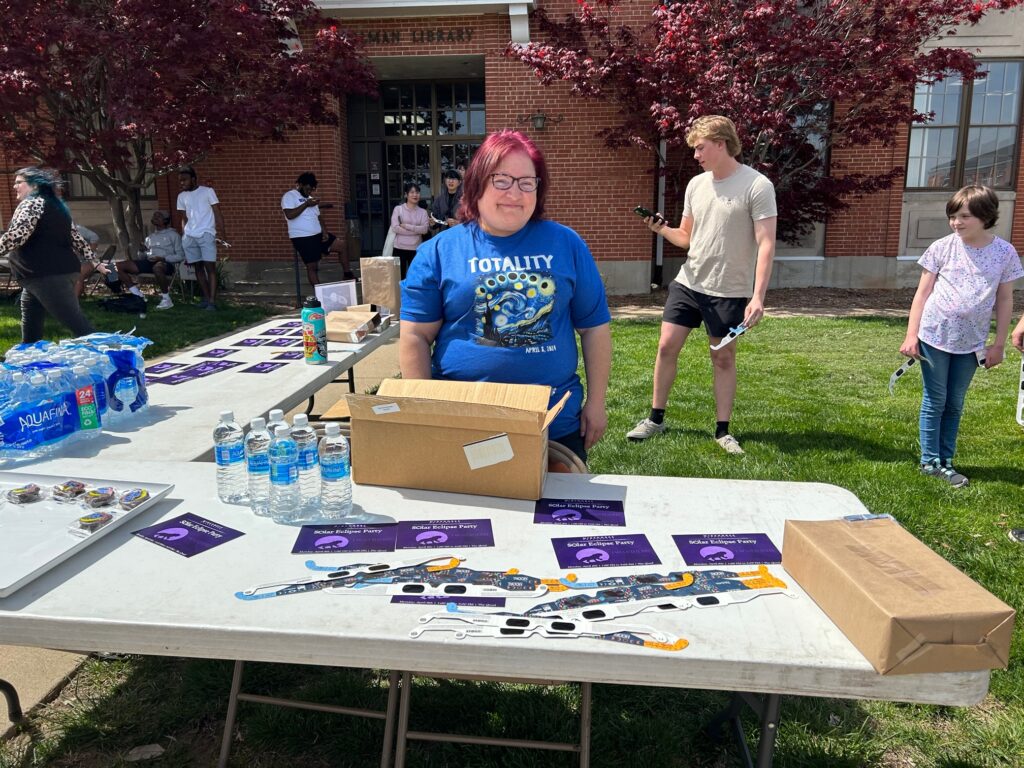
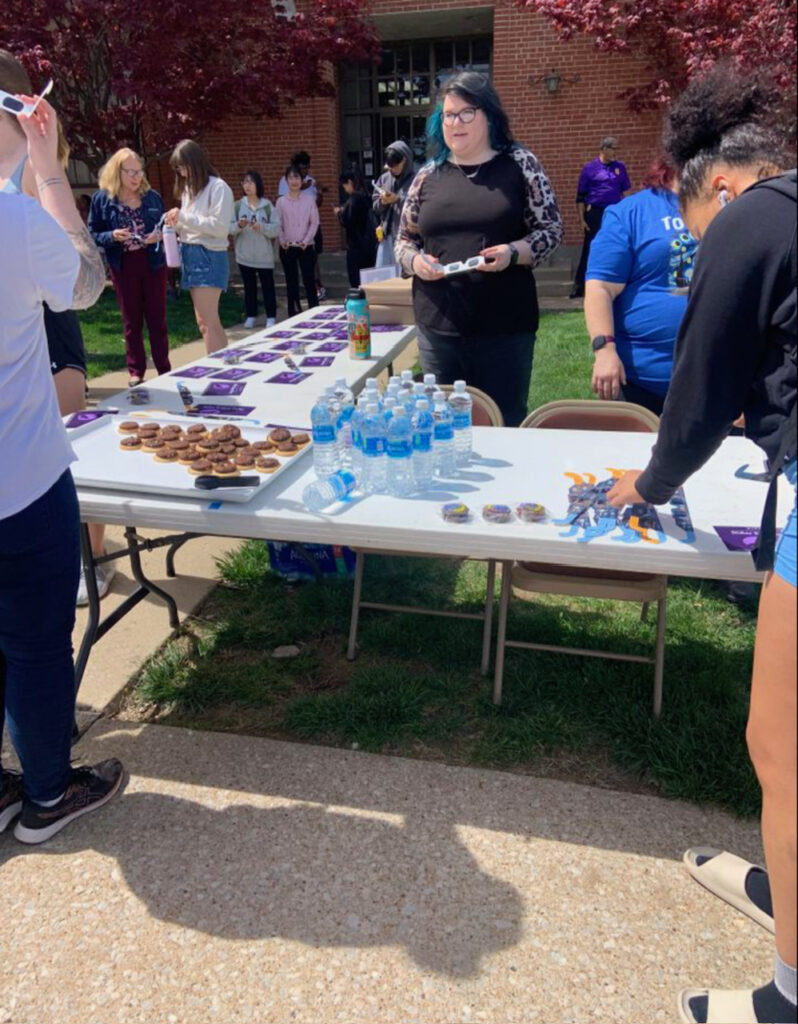
Songs like “Total Eclipse of the Heart” and “Black Hole Sun” became the soundtrack of the quad while students played spike ball or reclined on blankets to wait for the eclipse to reach its peak. McK Radio even set up a broadcast station to live stream the eclipse on social media and interview students.
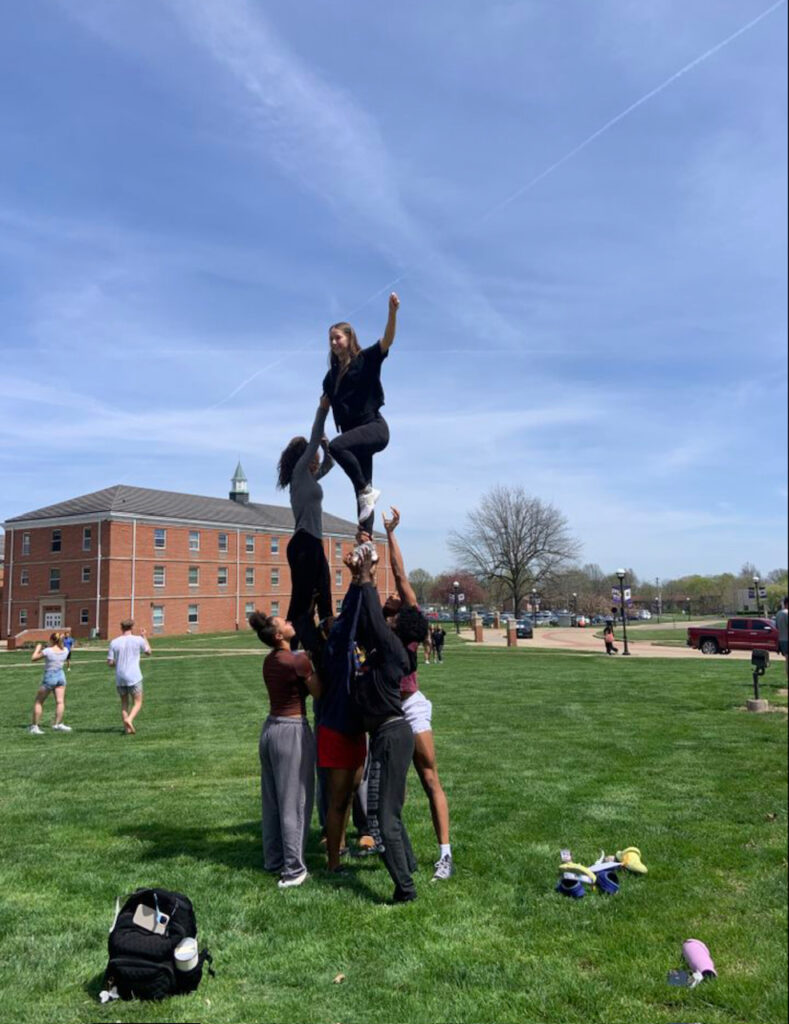
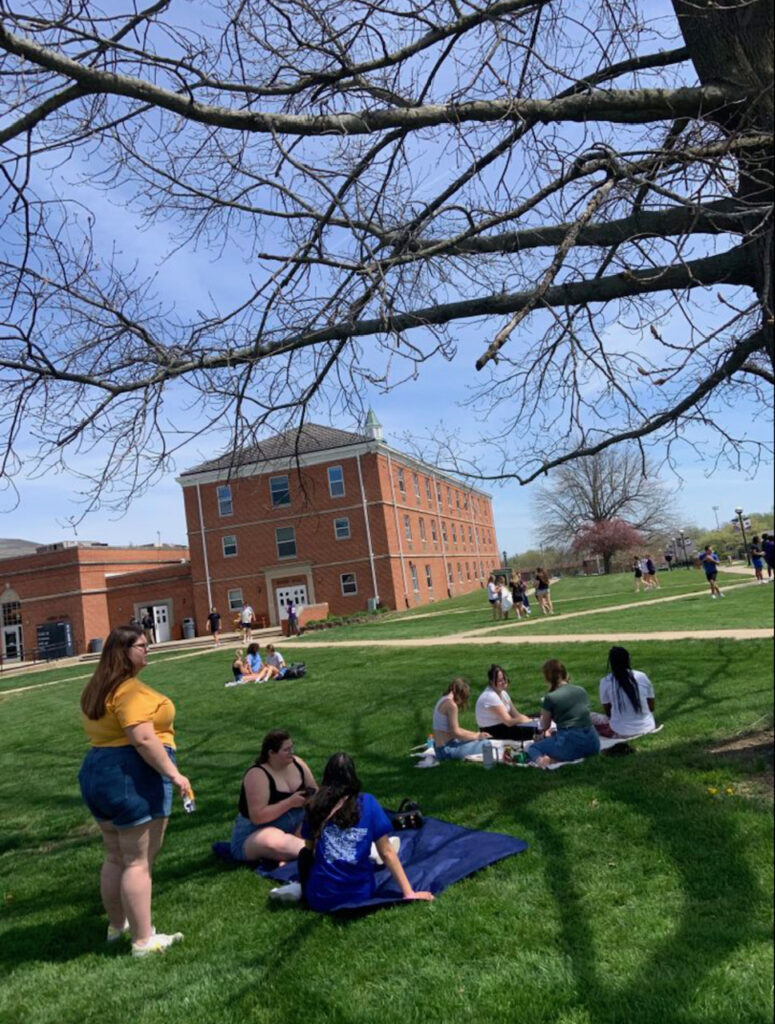

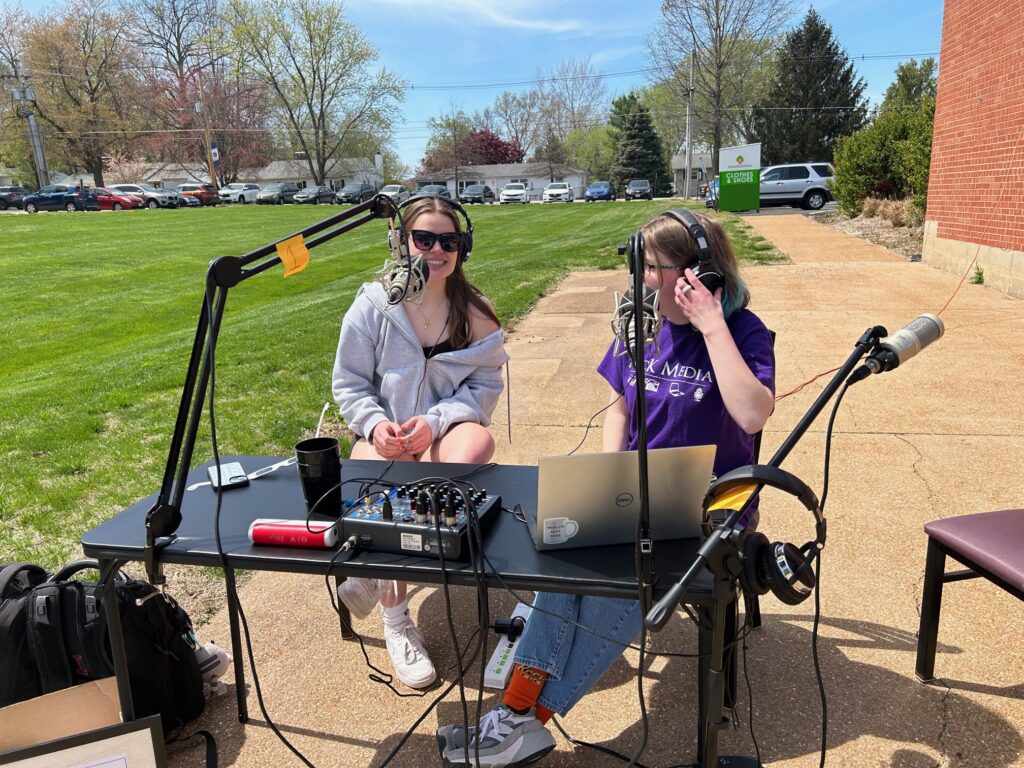
Then, as 2:00 neared, the sky darkened, and the temperature dropped a few degrees. Everyone on the quad put on their glasses and looked up to see the moon cover the sun. Only a sliver of sunlight remained in view once the eclipse reached its peak. After a moment of awe, the moon started to slip away and continue on its orbit, marking the end of the eclipse.
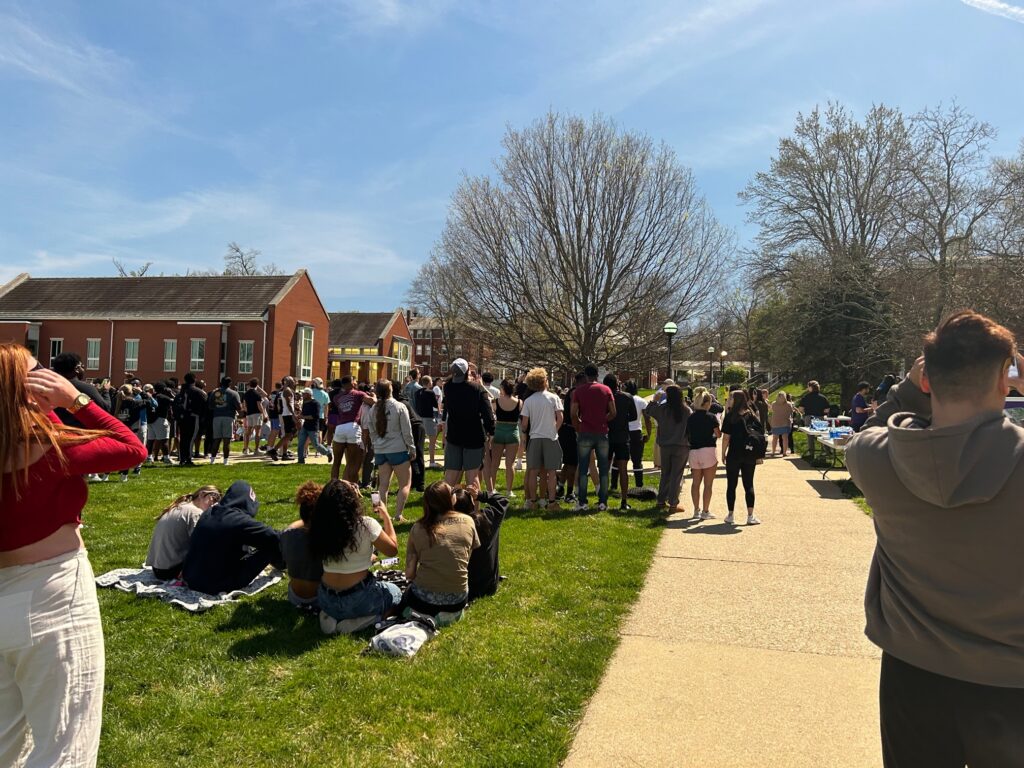
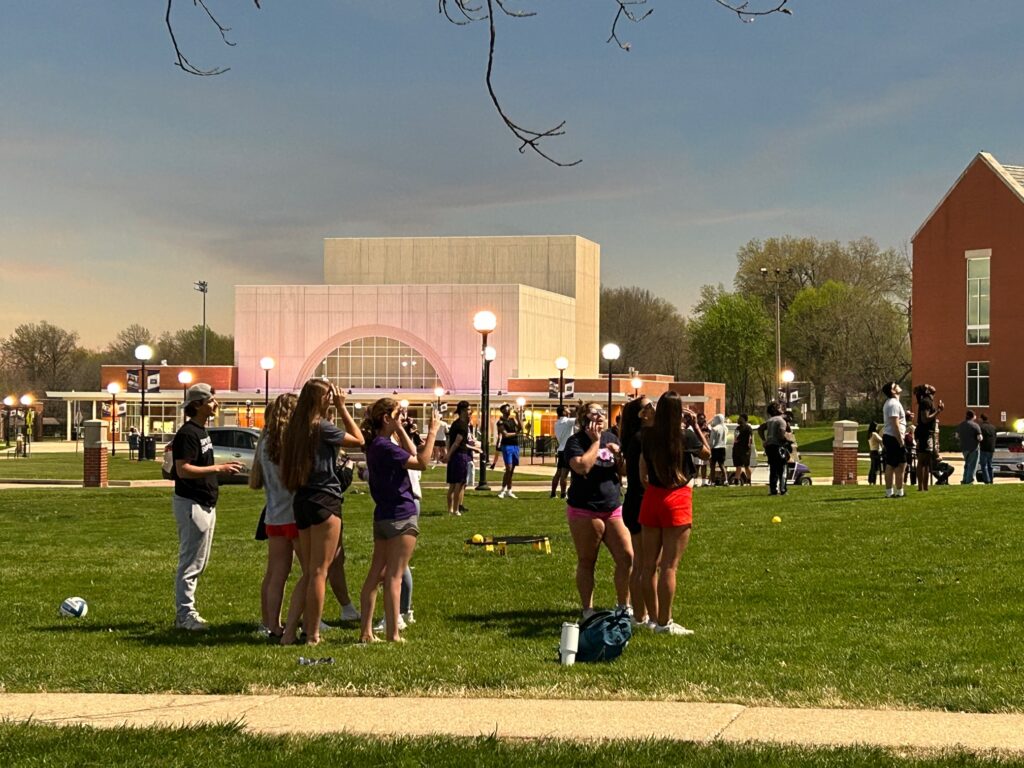
And since it’s twenty years until the next eclipse, this day was certainly a stellar phenomenon worth viewing.

Reference
Padilla, R., & Zaiets, K. (2024, April 8). What time is the total solar eclipse on April 8? Search your ZIP code for a viewing guide. USA TODAY. Retrieved April 8, 2024, from https://www.usatoday.com/story/graphics/2024/03/19/what-time-is-solar-eclipse-interactive-map/72747827007/

